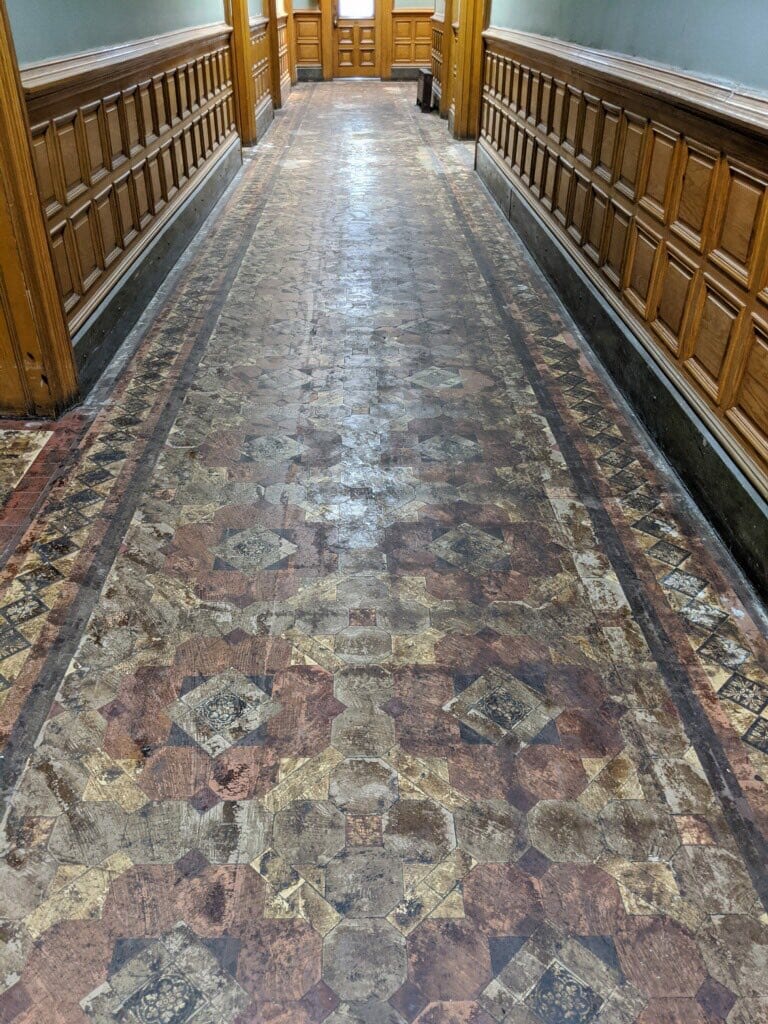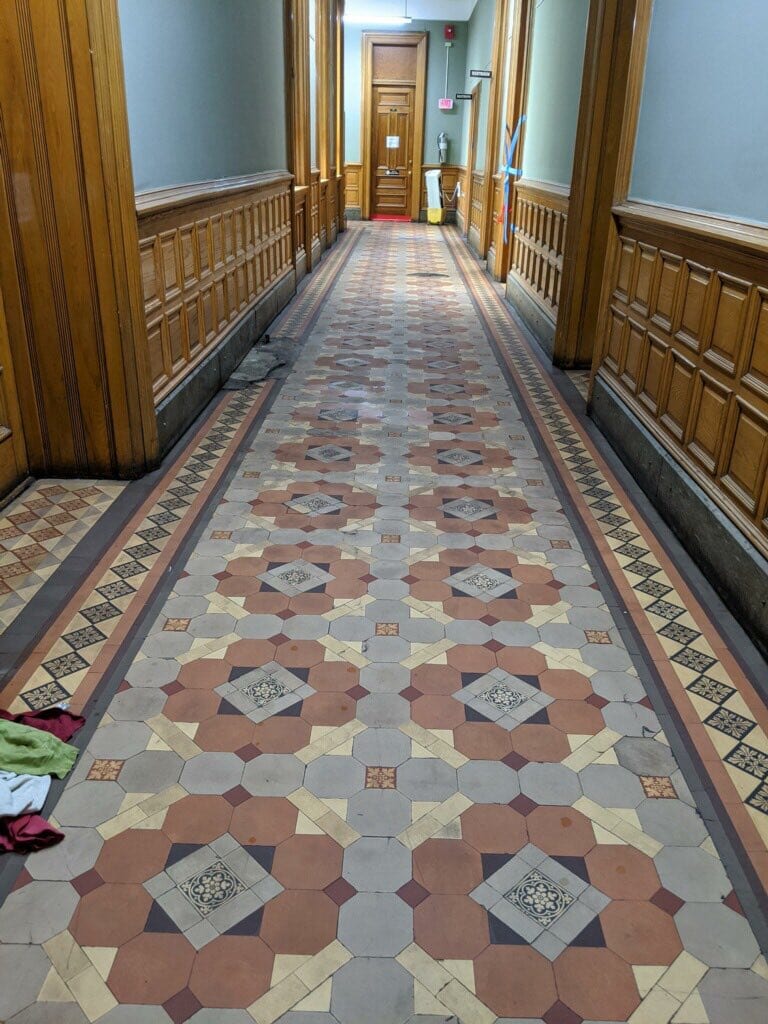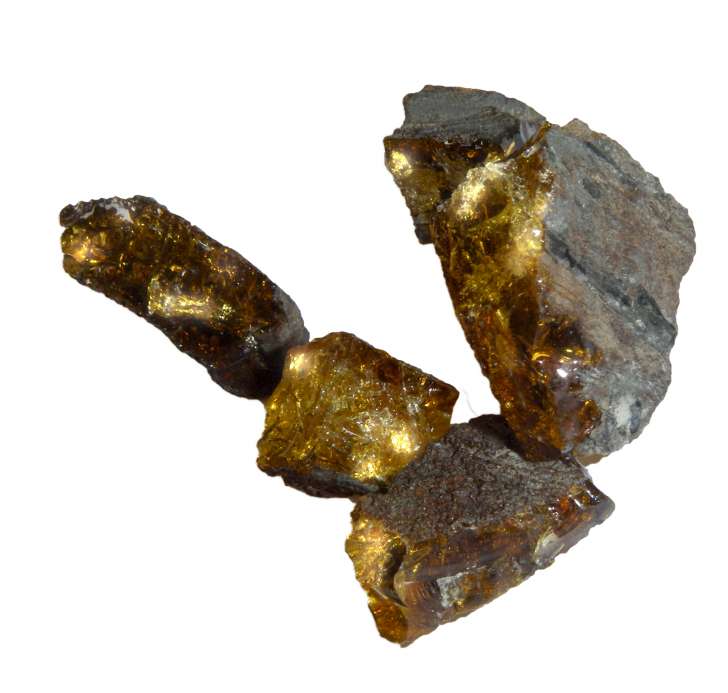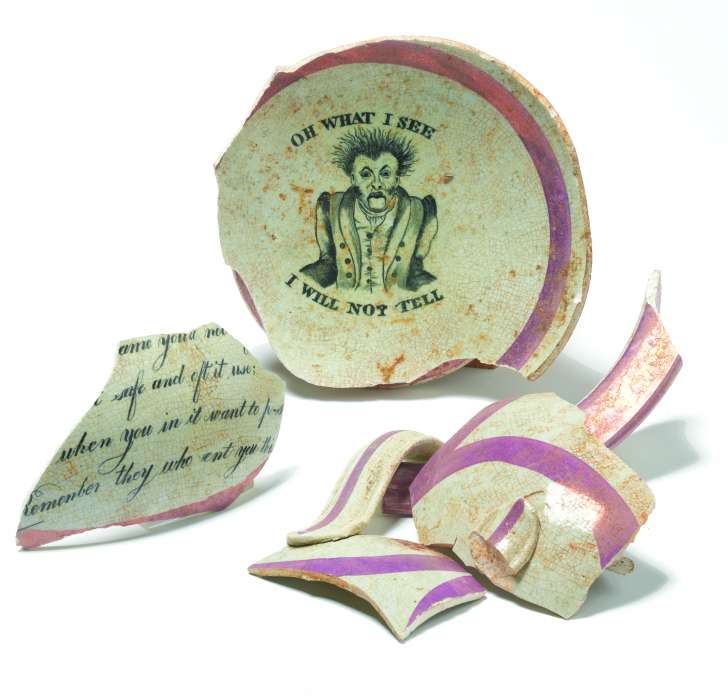Renovation projects can be a nuisance, but that’s why the Jersey City took advantage of shelter-in-place orders to renovate their city hall.
The city’s government probably expected to make some repairs, but they found some cool things along the way. Mayor Steven Fulop explains:
We used Covid-19 shutdown to do projects that would’ve been inconvenient for residents regularly (street paving, park renovations etc). One project was ripping up the 1960s vinyl floor at city hall. We thought we’d find garbage but instead we found the original from 100 yrs ago pic.twitter.com/tZdASc8JOb
— Steven Fulop (@StevenFulop) May 3, 2020
Let’s take a closer look at what people had to walk on in Jersey City’s city hall.

Photo Credit: Steven Fulop
This grey linoleum floor does the job all right, but it’s kinda meh. Workers removed it and obviously had to get the glue off.

Photo Credit: Steven Fulop
At first glance, this looks sloppy. But a nice polish revealed a hidden treasure!

Photo Credit: Steve Fulop
This beautiful floor looks like a work of art and gives the city hall a more regal touch. Many tweeted replies in response to this new finding.
The 1960s, a time of very bad ideas – including this one.
Well done. But why stop there. Time to demolish the eyesores which were erected in that era.
— ArchitecturalRevival (@Arch_Revival_) May 4, 2020
Many rightfully criticized the decision to cover up this amazing floor.
You have to wonder who The Brainiac was to cover up that beautiful floor.
— 5D Justice (@5D_Justice) May 5, 2020
One person shed some light as to why some gorgeous architectural accents have been covered up over time.
Gorgeous floor!
Gonna drop a bomb now: bacteria can build up on the mortar between the tiles and holds on to things like Covid-19. Mold too.
One of the reasons why they cover up Victorian floors.
Re-grout it with anti-bacterial grout, or paint with PVCU bond.
Wurd!— Gedi Gedye (@GedyeGedi) May 4, 2020
Here’s yet another great explanation that can help us understand what people in the 1960s were thinking.
Cleaning. Back then, solvents and cleaners were harsh & difficult/dangerous. Stripping & reapplying wax to a marble/stone floor took hours while a mop to linoleum/vinyl was easy. Same reason we painted wood panels & ripped out wooden blinds. Now, cleaners are more user friendly.
— Sometimes. Why? (@johnny_sd) May 4, 2020
But others in social media chimed in with findings of their own.
Gorgeous 'encaustic' tiles, not unlike these ones uncovered last month in a private house in #Limerick, #Ireland. Hidden treasure under the linoleum. Late 19th century tiles were fired twice, the ceramic pigment going all the way through the tile, allowing it to wear down evenly. pic.twitter.com/sw51s2gVYO
— Brian Nolan (@bgnolan) May 4, 2020
Check out this vivid description.
Stuff like that is so neat.
When we first bought this house, my dad tore up the floors in the living room cause the main part of the house is from the 1800s and has no foundation.
Under the hardwood, we found a different wood floor *and* this area rug sized sheet of linoleum.
— Just_a_fangirl (@Eternity24601) May 4, 2020
And here’s yet another treasure found after removing some carpet.
Same here! Ripped up carpet to find these 1890 beauties! pic.twitter.com/FTXO0pKXeC
— Christina Thomas Mazaheri (@LadyLaborLawyer) May 4, 2020
This person replied with another story about what they found as well.
My puppy peed on my carpet already in my home. When I pulled it up expecting to find plywood underneath I found *perfectly finished* hardwood floors – not even a buffing was required. Why in the world do people cover beautiful flooring to put ugly flooring on top of it?
— Paul Gundlach (@PaulSGundlach) May 4, 2020
One person summed up this find nicely:
When you dig for garbage, but find gold
—
Quinn zykir
(@lonetigerwolf) May 4, 2020
Looks like Jersey City has a popular new find. Architecture fans are probably clamoring with the city already.
Have you found anything interesting when doing home or business renovations? Our comments section is a great place to share your findings!
The post A New Jersey City Hall Renovated and Found Awesome Hidden Details Within appeared first on UberFacts.






